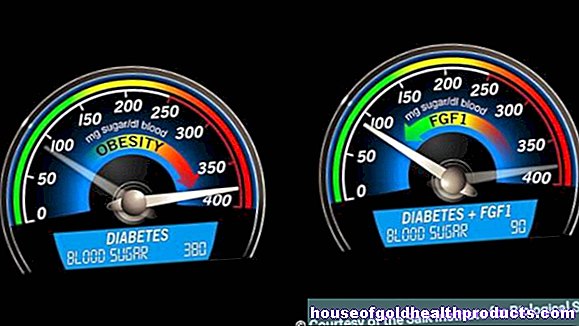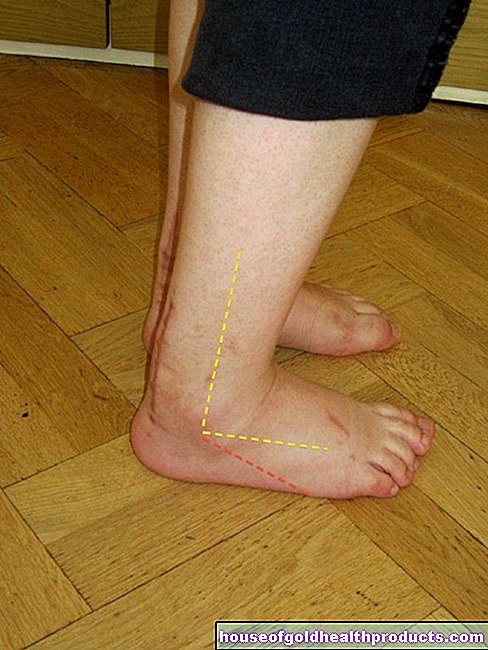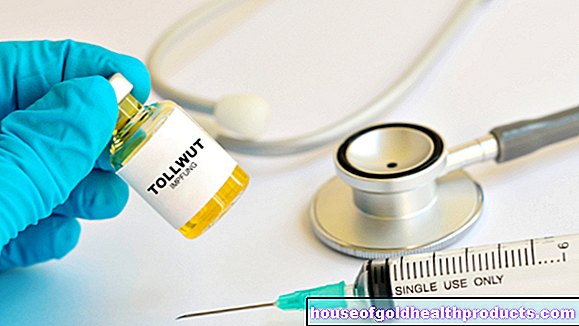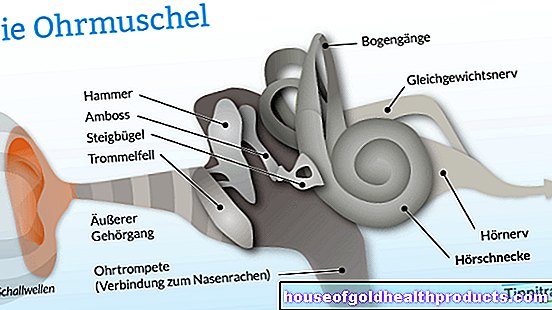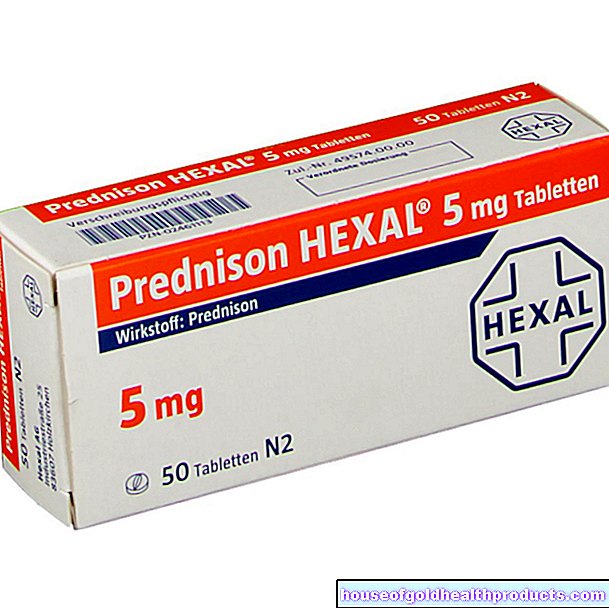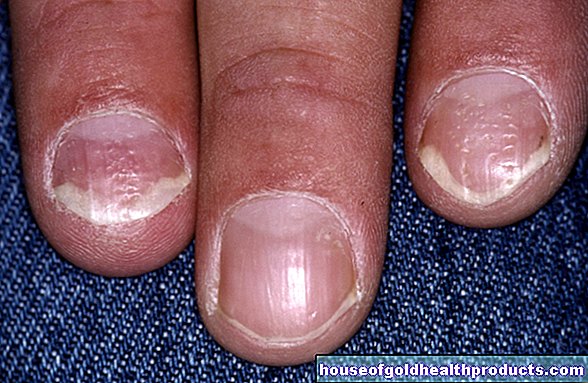Ambroxol
All content is checked by medical journalists.The active ingredient Ambroxol (also Ambroxol hydrochloride) is one of the most important cough relievers (expectorants) and remedies for sore throats. It is generally considered to be well tolerated and can also be used in children. Although Ambroxol has been known for a long time, the mechanism of action of the mucus solution is not yet fully understood. Here you can read everything you need to know about Ambroxol.
This is how Ambroxol works
Mechanism of action
Symptoms such as coughing and hoarseness often occur if the respiratory tract is caused by bacteria or viruses. The pathogens also irritate the mucous membrane in the airways, causing it to become inflamed and produce more mucus. If this mucus is solid, it is often difficult to cough it up.
The active ingredient ambroxol makes it easier to cough up the tough mucus. The underlying mechanism of action has not yet been fully clarified. According to studies, however, the active ingredient liquefies the mucus on the one hand and increases the activity of the so-called cilia on the other. The cilia sit on the mucous membrane of the airways and ensure that the mucus that has formed is transported away towards the windpipe. By activating them, the mucus can be better removed from the respiratory tract.
Ambroxol is also known to have a local anesthetic effect. The active ingredient blocks certain ion channels (sodium) and thereby prevents pain from being transmitted to the brain. In the form of lozenges, the active ingredient can therefore relieve acute sore throats.
Ambroxol absorption, breakdown and excretion
After ingestion through the mouth (orally), the active ingredient is quickly and almost completely (around 70 percent) absorbed from the intestine into the blood. The maximum effect occurs after about two to four hours. The active ingredient is then broken down in the liver. The degradation products are excreted with the urine via the kidneys.
When is Ambroxol used?
Ambroxol drugs are used for long-term respiratory diseases with excessive mucus build-up and problems with coughing up the mucus.
In addition, the active ingredient is used as an additional therapy for respiratory distress syndrome in newborns and premature babies.
Another area of application (indication) for Ambroxol is acute sore throats.
This is how Ambroxol is used
Lower respiratory diseases
The active ingredient is usually taken in the form of tablets or capsules. If patients cannot take solid dosage forms, an ambroxol cough syrup and ambroxol drops are also available. It is also possible to inject the active ingredient directly into the bloodstream (in the form of ampoules).
The Ambroxol dosage for adults and adolescents 12 years and older is 75 milligrams per day. Newborns, toddlers and children receive a reduced dose.
Usually, ambroxol juice or capsules are taken after a meal.
The active ingredient should not be taken for more than four to five days.
Use for sore throats
Ambroxol is used in the form of lozenges for sore throats. Adults and adolescents from 12 years of age can use up to six tablets per day.
What are the side effects of Ambroxol?
Occasionally (in 0.1 to one percent of those treated) ambroxol causes side effects such as allergic reactions and gastrointestinal complaints.
When sucking sore throat pills, taste disturbances and numbness in the mouth and throat often occur (i.e. in one to ten percent of those treated).
Serious skin reactions after taking the active ingredient have been reported very rarely. If you notice an allergic skin reaction, stop taking it and consult a doctor immediately.
What should be considered when taking Ambroxol?
limitations
In patients with impaired kidney or liver function, drugs containing ambroxol should only be used after a doctor has carefully weighed the benefits and risks. Ask your doctor or pharmacist if you are not sure.
Interactions
If cough suppressants are used at the same time (for dry, irritating cough), the reduced cough reflex can cause a dangerous accumulation of secretion. Cough relievers and cough suppressants should therefore only be used together if specifically instructed by the doctor.
pregnancy and breast feeding period
The amount of experience in the use of ambroxol during pregnancy and breastfeeding is not very high. So far, however, no negative effects on the unborn child or infant are known.
If inhalation treatment and adequate fluid intake are inadequate for diseases of the lower respiratory tract, drugs containing ambroxol are considered to be the agent of choice during pregnancy and breastfeeding.
Ambroxol lozenges for sore throats should not be used during pregnancy and breastfeeding.
How to get medication with ambroxol
Ambroxol medication is only available from a pharmacy. You can get them over the counter at the pharmacy.
Tags: healthy workplace alcohol drugs prevention
